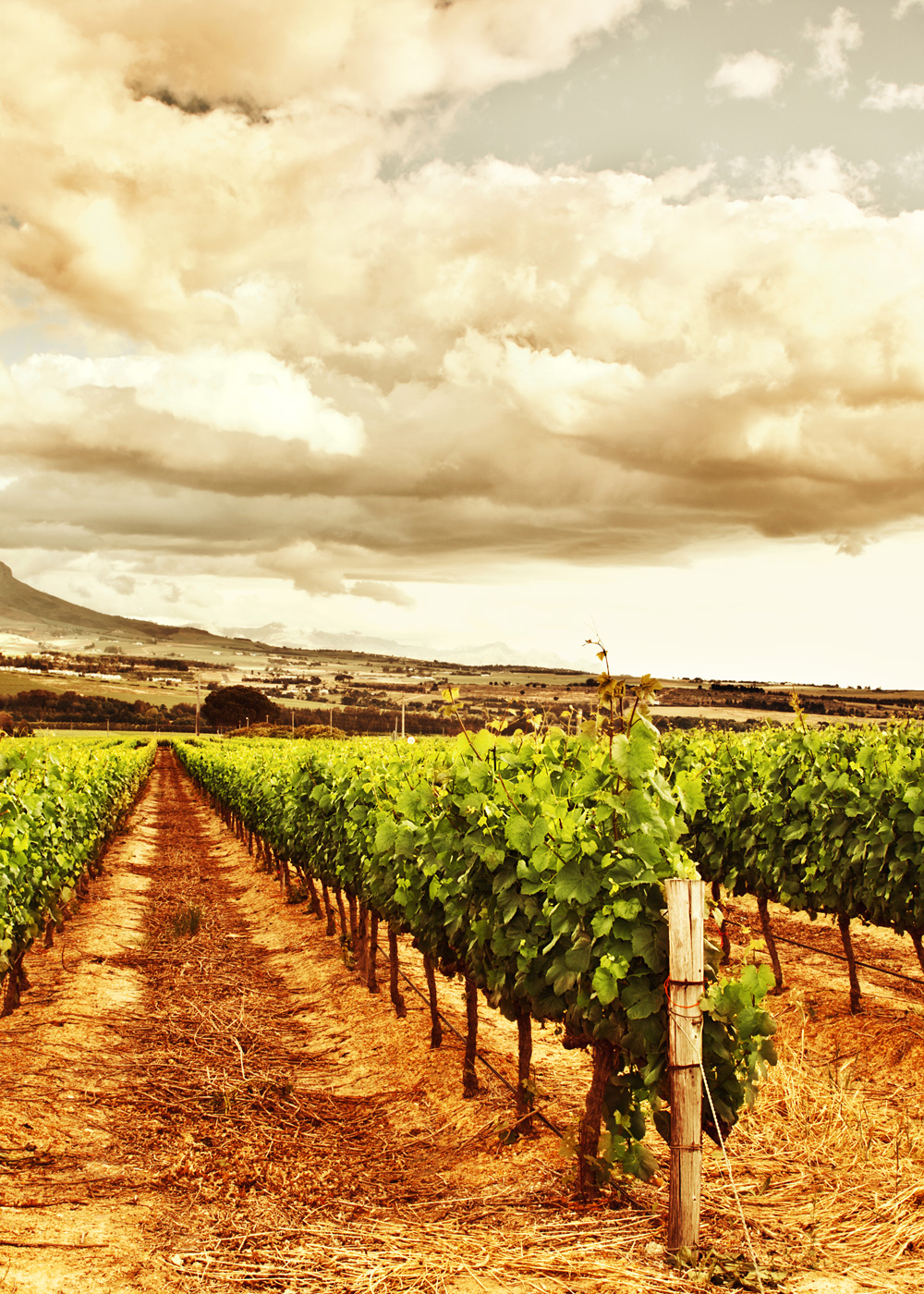The world of wine is often divided into two categories: the Old World, and the New World. The term “Old World” is understood to refer to Europe, while the term “New World” refers to wine regions outside of Europe. South Africa occupies a fascinating place within this paradigm because it lies clearly outside of Europe and produces wine styles similar to those of other New World regions like the USA or Australia. Its vineyards, however, are extremely old and have a decidedly Old World heritage and history.

The oldest wineries in South Africa were founded by Dutch colonists in the 17th century and have produced more than three hundred vintages. These old South African wineries have a much longer unbroken history of production than the majority of their European counterparts, which have had to rebuild many times, due to war and political upheaval.
In this post, we’ll discuss a few of the exciting regions in South Africa.

Constantia

The small region of Constantia lies just outside of Cape Town, near the South Atlantic coast. Although it still produces excellent wine, Constantia’s reputation was once among the best in the world. Demand for its signature sweet wine made from Muscat was such that, in the 18th and 19th centuries, Constantia achieved prices and acclaim arguably never again rivaled by a wine region in the New World. Napoleon was said to have had a particular fondness for Constantia and, as the Emperor of France, he had access to many great wines for comparison.
In the 1860s, Constantia was struck with a parasitic insect called “Phylloxera” and a fungal disease called “powdery mildew.” Together, these unfortunate challenges devastated the vineyards. It wasn’t until the 1980s that the international reputation of Constantia began to resurface. Today, they produce sweet wines made from the traditional Muscat, as well as dry wines from various grapes, including Sauvignon Blanc, Shiraz, and Cabernet.
Stellenbosch

Vineyards in Stellenbosch were first planted in the late 1600s and are currently some of the most famous in South Africa. Stellenbosch has a dry climate moderated by breezes coming from the nearby ocean. There are numerous soil types and microclimates in Stellenbosch, allowing for a broad variety of grapes and styles. Two grapes that have historically been important in the area are Pinotage, a local crossing of Pinot Noir and Cinsaut, and Chenin Blanc, known in South Africa as “Steen.” There are also excellent examples of Shiraz, Cabernet, Merlot, Chardonnay, and Sauvignon Blanc among others.
Paarl

The region of Paarl is just inland from Stellenbosch and is warmer with less of an ocean influence. While white wines are still produced here, ripe, powerful red wines have been gaining prominence in the region in recent years. Some of the largest wineries in South Africa are located in Paarl. Even though it sees little ocean influence, Paarl does see a fresh south easterly wind, which keeps the vineyards dry and free of fungus. The wind is called the “Cape Doctor,” because it was thought by the inhabitants of Cape Town to blow away fog and pollution, promoting the general health of the citizens.
Tulbagh

Further inland than either Stellenbosch or Paarl is the warm, dry region of Tulbagh, where Shiraz is the star. The arid climate and ample sunlight give Tulbagh wines a full body, expressive fruit flavors, and ripe, soft tannins. These are some of the most unapologetically New World-style wines in South Africa.
Walker Bay

The Walker Bay region is on the southern coast of the country and is cooled by currents coming from the Southern Ocean around Antarctica. This cool climate is perfect for grapes like Pinot Noir and Chardonnay, which can rival wines from Burgundy for crisp, refreshing, mineral acidity and lean, delicate fruit.
Now that you know a little about the wines of South Africa, keep an eye out from some of their amazing wines, and have fun trying something new!



